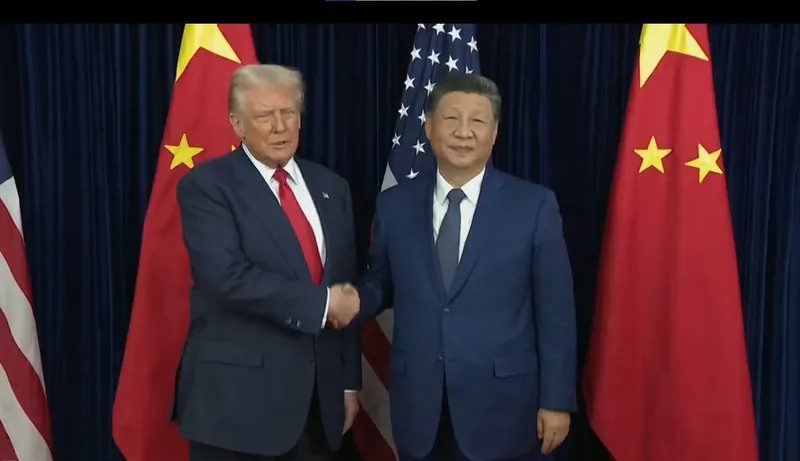Busan: U.S. President Donald Trump and Chinese President Xi Jinping are meeting in South Korea on Thursday in an effort to ease months of escalating trade tensions between the world’s two largest economies.
The talks come at a critical moment, as Trump’s renewed tariff campaign and China’s retaliatory export limits on rare earth elements have strained global markets. Both sides appear eager to avoid further disruption to the global economy that could harm their own domestic growth.
In the lead-up to the meeting, U.S. officials signaled that Trump is unlikely to follow through on his threat to impose an additional 100% import tax on Chinese goods. Beijing, meanwhile, has hinted at easing export controls on rare earths and resuming purchases of American soybeans.
Speaking aboard Air Force One en route to South Korea, Trump suggested he may also scale back tariffs tied to China’s role in the production of fentanyl.
“I expect to be lowering that because I believe they’re going to help us with the fentanyl situation,” Trump said, adding, “The relationship with China is very good.”
Ahead of the talks, Trump posted on Truth Social that the meeting would serve as a “G2,” highlighting the two nations’ dominant roles in the global economy. Unlike the lavish G7 or G20 summits, however, this meeting is being held in modest surroundings — a small gray building with a blue roof on a military base near Busan’s international airport.
The talks are scheduled to begin at 11 a.m. local time. Trump’s helicopter touched down around 10:20 a.m., followed shortly by an Air China plane carrying Xi. On Wednesday evening, Trump was overheard telling other APEC leaders that the discussion could last “three, four hours,” after which he would return to Washington.
Officials from both nations met earlier in Kuala Lumpur to prepare the ground. China’s top trade negotiator, Li Chenggang, said the two sides reached a “preliminary consensus,” a claim echoed by U.S. Treasury Secretary Scott Bessent, who described the meeting as establishing a “very successful framework.”
Markets have responded positively to signs of progress, with U.S. stocks rising on optimism that a trade deal might be forthcoming.
Still, despite the friendlier tone, deep competition remains between Washington and Beijing — from manufacturing and technology to global influence, including over Russia’s war in Ukraine. Trump has indicated he does not plan to raise sensitive issues such as Taiwan’s security.
“The deal on the table looks like short-term stabilization dressed up as strategic progress,” said Craig Singleton of the Foundation for Defense of Democracies. “Both sides are managing volatility while their deeper rivalry continues.”
Both countries continue to leverage their economic strengths — Trump through tariffs and Xi through control of critical minerals. China is the world’s leading producer of rare earth elements, vital for industries ranging from defense to clean energy.
Trade tensions have seesawed throughout the year. In April, Trump announced a plan to raise tariffs on Chinese goods to 145%, only to retract it amid market turmoil. Earlier this month, he again threatened a 100% import tax in response to China’s latest export restrictions, imposed on October 9.
After Thursday’s talks, Trump plans to return to Washington, while Xi will remain in South Korea to meet regional leaders during the Asia-Pacific Economic Cooperation (APEC) summit, which officially begins Friday.
“Xi sees a chance to present China as a stable, reliable partner — especially to countries frustrated by U.S. tariff policy,” said Jay Truesdale, a former U.S. State Department official and now CEO of TD International.













